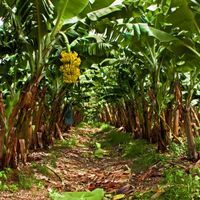pathogens

What Lies Beneath: Wastewater Testing for Pathogens
The Scientist | May 3, 2023 | 1 min read
Michael Wiley will discuss detecting pathogens in communities through wastewater surveillance programs.

Q&A: What if Immune Cells Don’t Actually Detect Viruses and Bacteria?
Dan Robitzski | Feb 3, 2023 | 10+ min read
The Scientist spoke with Jonathan Kagan about his idea that immune cells respond to “errors” made by unsuccessful pathogens, not the pathogens themselves.

Aquatic Bacteria Reveal a Common Genetic Link to a Deadly Human Pathogen
Iris Kulbatski, PhD | Mar 7, 2022 | 5 min read
Researchers use genetic clues to track the spread of antibiotic resistant bacteria from the environment to patients.

CDC Warns of Person-to-Person Transmission of Resistant Fungus
Shawna Williams | Jul 26, 2021 | 3 min read
In a first, patients who hadn’t been treated with antifungals were found to carry Candida auris impervious to all three available classes of the drugs.

Identifying a Killer, 1895
Catherine Offord | Jul 1, 2021 | 4 min read
A contaminated ham put bacteriologist Émile Pierre-Marie van Ermengem on the path to discovering the microbe that produces botulinum toxin.

BioHub Network Aims to Advance Sharing of Pathogens for Research
Shawna Williams | Jun 6, 2021 | 5 min read
The World Health Organization–led program will promote equity in addition to facilitating access to samples, a WHO official involved in the project tells The Scientist.

Gloria Echeverria Investigates an Insidious Form of Breast Cancer
Max Kozlov | Dec 1, 2020 | 3 min read
The newly minted Baylor College of Medicine faculty member is working to crack the mystery of triple negative breast cancer.

Infographic: How NETs Work
Borko Amulic and Gabriel Sollberger | Oct 1, 2019 | 3 min read
While neutrophil extracellular traps help guard the body from infection, they also can contribute to a range of diseases.

Why Immune Cells Extrude Webs of DNA and Protein
Borko Amulic and Gabriel Sollberger | Oct 1, 2019 | 10 min read
Extracellular webs expelled by neutrophils trap invading pathogens, but these newly discovered structures also have ties to autoimmunity and cancer.

Dreaded Banana-Infecting Fungus Spreads to Latin America
Shawna Williams | Aug 20, 2019 | 1 min read
Researchers confirm TR4’s presence in Colombia, increasing concerns about the future of the industry.

Image of the Day: Raindrop Vortex
Carolyn Wilke | Mar 4, 2019 | 1 min read
Splashes from raindrops spend fungal spores high enough aloft to be swept away by the wind, researchers observe with high-speed photography.

Infographic: Plants Deploy Exosomes to Stop Alien Invaders
Amanda Keener | Feb 1, 2019 | 2 min read
A growing branch of research on how plants use exosomes to interact with their environment is opening up a new field of plant biology.

Report: Security Lapses in Handling of Deadly Pathogens
Katarina Zimmer | Oct 31, 2017 | 1 min read
A government report finds that laboratories in the U.S. that work with select agents such as Ebola and anthrax aren’t as secure as they should be.

Contributors
Aggie Mika | Oct 1, 2017 | 3 min read
Meet some of the people featured in the October 2017 issue of The Scientist.

Do Pathogens Gain Virulence as Hosts Become More Resistant?
Andrew F. Read and Peter J. Kerr | Oct 1, 2017 | 10+ min read
Emerging infections provide clues about how pathogens might evolve when farm animals are protected from infection.

Infographic: Evolving Virulence
Andrew F. Read and Peter J. Kerr | Sep 30, 2017 | 2 min read
Tracking the myxoma virus in the wild rabbit populations of Australia has yielded insight into how pathogens and their hosts evolve.

Image of the Day: Everybody Vomits
The Scientist | Aug 31, 2017 | 1 min read
In a process known as vomocytosis, macrophages swallow pathogens whole only to spew them back out later, unharmed.
